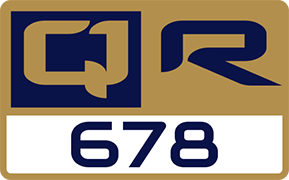- info@pro1laser.com
- 1-604-649-1234
- Monday 07.00 am - 12.00 pm Sunday

Seborrheic dermatitis is a common skin condition characterized by red, scaly, and sometimes itchy patches on the scalp. Beyond its immediate discomfort, it can also impact hair health, leading to thinning or increased hair fall in severe cases. The condition is thought to be related to an overreaction to Malassezia yeasts present on the skin, combined with an individual’s immune response.
While traditional treatments for seborrheic dermatitis include medicated shampoos, topical steroids, and antifungal agents, these solutions often focus on symptom management rather than addressing potential hair loss or thinning associated with the condition.
The QR678® Neo therapy introduces a novel and effective treatment avenue for individuals experiencing hair loss as a result of seborrheic dermatitis. By leveraging a proprietary blend of growth factors and peptides, QR678® Neo targets the underlying factors of hair follicle health, promoting regrowth and revitalizing hair in areas affected by seborrheic dermatitis.
QR678® Neo therapy works by nourishing the scalp and hair follicles with essential growth factors that are often depleted in the presence of scalp conditions like seborrheic dermatitis. This not only aids in reducing hair fall but also encourages the growth of new, healthy hair.
For individuals struggling with seborrheic dermatitis and its impact on hair health, QR678® Neo offers a promising solution. By focusing on the health of the hair follicles and promoting new growth, QR678® Neo therapy stands as a beacon of innovation in treating hair loss associated with scalp conditions.
The inflammation associated with seborrheic dermatitis can affect the hair follicles, leading to a condition known as “telogen effluvium.” This condition causes more hair than usual to enter the resting phase of the hair growth cycle, resulting in hair shedding.
The itching caused by seborrheic dermatitis can lead to vigorous scratching of the affected areas, including the scalp. This scratching can damage hair follicles and potentially lead to hair loss.
Seborrheic dermatitis is often associated with excessive oil production on the scalp. This excess oil can contribute to hair loss by clogging hair follicles, which can inhibit hair growth.
Factors like an individual’s age, genetics, and overall health can influence the degree of hair loss experienced during chemotherapy. Some people may experience only mild hair thinning, while others may lose most or all of their hair.
The QR678® Neo therapy is a proprietary, first in class hair fall & hair regrowth therapy, which has revolutionized the treatment of hair fall in alopecia. This formulation was invented in India & has been named QR678 inspired by the new generation ubiquitous presence of “Quick Response“ QR code. 678 in Morse Code signifies “there is no answer”. This formulation has been named QR678® to signify a “Quick Response to a disease which earlier had no answer”.
QR678® Neo consists of a proprietary blend of natural growth factors, identical to those found in a healthy scalp, ensuring its safety for universal application. This precise formulation contains targeted concentrations of specific factors known to promote hair growth. With QR678® Neo, patients experience no side effects. The treatment is administered on an outpatient basis, with visible results emerging as early as eight weeks after commencement. Hear directly from our patients about their experiences with the QR678® Neo hair loss treatment.
QR678® Neo treatments involve 5 to 10 sessions, spaced approximately 2-3 weeks apart. Visible improvements can be observed within a few weeks following the commencement of the therapy. Once optimal results are attained, further injections are unnecessary unless hair loss recurs. This enduring effect is due to QR678® Neo’s capacity to rejuvenate hair follicles. Discover the reasons behind QR678® Neo’s high efficacy in reducing hair loss and enhancing hair regrowth.
QR678® Neo offers a safe treatment experience without any side effects, enabling you to continue with your day-to-day activities right after each session. It is recommended to use a mild shampoo at least a day post-treatment and refrain from scratching or rubbing the area treated. If any concerns arise, consult your treatment provider for guidance.
Genetic hair loss, often hereditary and observed in both men and women, can indeed be managed effectively if treatment commences early. This type of hair loss, which frequently runs in families, typically follows a distinctive pattern: an M or W shape in men and thinning along the hair part in women. If you have a family history of patterned baldness, it’s crucial to monitor your hair health closely and consult a doctor at the first sign of hair loss.
There are several well-established treatments for genetic hair loss, including:
Alopecia following chemotherapy is a widespread and emotionally impactful side effect of cancer treatments. The fear of hair loss often deters patients from undergoing necessary therapies. While hair loss from chemotherapy is usually temporary, regrowth can take months or even up to a year. However, recent advancements in treatment can expedite recovery:
These treatments offer hope and options for those facing hair loss due to chemotherapy, providing a path to recovery and helping to mitigate one of the most challenging aspects of cancer treatment.
QR678® Neo is a first-of-its-kind product developed by a group of clinical scientists after extensive research.